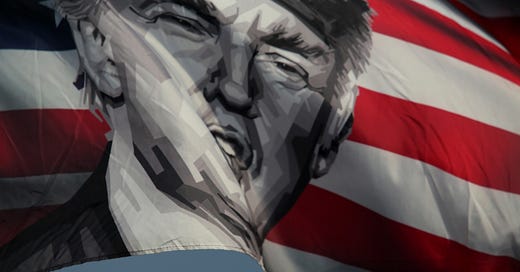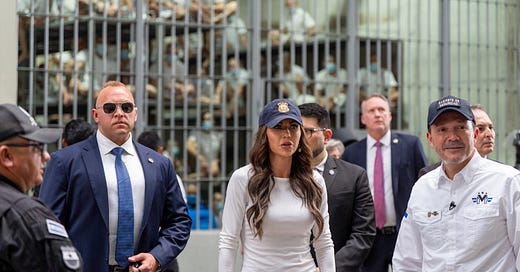
The Real Angela Davis
Why is the Smithsonian's National Museum of African-American History and Culture honoring Angela Davis?
The National Museum of African-American History and Culture in our nation’s capital fills a void, providing us with an in depth look at the unique African-American experience in America since the days of slavery.
It is disheartening, therefore, to hear that this coming September the museum is featuring an old documentary on Angela Davis titled, Free Angela Davis and All Political Prisoners. After the screening there will be a discussion moderated by Rhea Combs who will interview and question Ms. Davis. In announcing the event, the museum’s press release notes that “we all recognize that Prof. Davis is a figure for the ages, as fascinating to us now as she was at the height of her incarceration and trial” (which took place in 1972). The release added that Davis’s life “is a quintessential American story of activism,” and that “because of her activism in support of social justice, she was criminalized and named on the FBI’s 10 most wanted list.”
This description is demonstrably false. And it elides the most important parts of Davis’s biography.
Angela Davis was not arrested and tried because she worked for “social justice.” She was tried for purchasing guns for a courtroom raid carried out by her lover George Jackson’s brother, Jonathan, whose use of these guns in a shootout (while attempting to flee) killed one of the four people he had taken hostage, a man named Judge Harold Haley. The purchase of these guns was easily traced to Davis who, rather than surrendering, fled to avoid being captured. She was eventually found at a motel on 8th Avenue in New York City, where she was taken into custody, having been charged by superior court judge Peter Smith with “aggravated kidnapping and first-degree murder.”
Rather than working for civil rights in the manner of Martin Luther King Jr., James Farmer, or A. Philip Randolph, Davis was a leader of the American Communist Party, and a member of the violent and armed Marxist group, the Black Panther Party. After her arrest, the international Communist movement declared her a martyr and Moscow orchestrated an international group of gullible Europeans who proclaimed her innocence and demanded her freedom. In Communist East Germany, school children were told to write postcards to her expressing their support and solidarity.
At her trial, the jury surprisingly found her innocent even though 20 witnesses had testified against her. Careful investigation later revealed how compromised the jury was. One of the jurors, Mary Timothy, would go on to have an affair with Communist Party member (and head of the official Committee to Free Angela) Bettina Aptheker. Immediately after Davis was acquitted, another jury member faced the reporters and TV networks and gave them the clenched-fist salute regularly used by revolutionaries. That juror, Ralph Delange, explained “I did it because I wanted to show I felt an identity with the oppressed people in the crowd . . . and to express my sympathy with their struggle.”
Interestingly, Davis’s commitment to prisoner’s rights stopped at America’s shores.
A hardline Communist, Davis supported the Soviet invasion of Czechoslovakia in 1968 and relished being a guest of Fidel Castro in Cuba—where she went immediately following her acquittal. But her greatest love was for the Soviet Union and the Eastern European countries it ruled over. In 1979, Davis received the Lenin Peace Prize (once known as the Stalin Peace Prize). Russian writer Vitaly Korotich, who met her in Moscow, noted later that Davis was “a useful tool for the Brezhnev government, used to bolster Communist ideals and speak out against the West during the Cold War.”
She also did her part to defend the arrest and imprisonment of Eastern European dissidents. Czech dissident Jeri Pelikan wrote an open letter asking her to defend his comrades “so they can defend themselves against their accusers as you have been able to do in your country.” The plea fell on deaf ears. Answering on her behalf, black Communist leader Charlene Mitchell explained that Davis believed that people were only jailed in the so-called People’s Democracies “if they were undermining the government.” When Alan Dershowitz asked her to support political prisoners in the Eastern bloc, she responded that “they are all Zionist fascists and opponents of socialism.”
In 1980 and 1984 Davis ran for vice president on the Communist ticket, led by the party’s chairman, Gus Hall. Today, her main causes are fighting “the prison-industrial complex,” demanding freedom for all black prisoners whom she defines as “political prisoners,” and leading the BDS movement to delegitimize Israel.
Indeed, attacking Israel seems to be one of her current major concerns. Visiting the West Bank, she said that “the wall, the concrete, the razor wire everywhere conveyed the impression that we were in prison.” She says the jailing of African-Americans in the United States is the equivalent of the Palestinian terrorists jailed by Israel, whom she supports and defines as freedom fighters—including those convicted in Israeli courts, such as Rasmea Odeh and Marwan Barghouti. It should not come as a surprise to learn that Rep. Ilhan Omar has said that Davis is her inspiration.
Why would one of America’s most important museums applaud the life of a militant revolutionary who hates her own country and has never repudiated her support of totalitarian regimes?
And, if the National Museum of African-American History and Culture truly does believe that Davis is a worthy subject of discussion, why would they present an air-brushed caricature instead of grappling with who she really is and what she really did?
Correction, July 21, 2019 1:04 p.m.: The article originally stated that Marwan Barghouti was the founder of BDS. Omar Barghouti, not Marwan Barghouti, founded the BDS movement. The piece has been changed accordingly.












